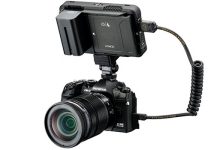We all want to stare into the eyes of the past, vividly remembering those awful days when we were stuck in stale, dark edit rooms in some basement somewhere with hard drive sounds roaring and monitors beaming light into our tired, bloodshot eyeballs, and scream in defiance a statement that starts with the letter “F” and ends with the word “You” as we hold our paper thin editing notebooks and head outside.
But all of the murmurs we keep hearing about the M1 MacBooks are telling us that, although these are good laptops, they aren’t that pleasant of a machine to edit on. Apple initially announced the M1 with two choices for RAM (8GB or 16GB); however, as the systems started shipping, the only one you could get your hands on was the 8GB M1.
Was it just the lack of RAM in the new 8GB M1 MacBook that was holding us up? Now that we’re finally seeing the 16GB versions out in the real world, Created Labs put the two to the test, hoping for a massive difference.
We all know RAM plays a big factor when you’re editing video. Software applications like Premiere Pro, After Effects, and Resolve eat up a lot of our systems resources, but will more physical memory improve our render times with the 16GB M1 MacBook Air?
The answer is – No.
Render Times
The render times for exporting from Premiere and Resolve using a system with the M1 chip is nearly identical. The RAM has impacted nothing with the 8GB and 16GB rendering performance – both systems are barely seconds away from each other.
Have a look for yourself.
Real-Life Editing Performance
Guess what? They’re pretty dead even in this test as well. The software opens at the same speed, renders in Premiere and Resolve are virtually identical, and scrubbing/playback speeds are too close to even notice.
Rendering in the background shows just a slight advantage for the 16GB version with it finishing just a few seconds ahead of the 8GB model, but that is even almost too close to even tell. RAM usage shows that while rendering, Resolve uses 3GBs more RAM on the 16GB model, which would be expected but still doesn’t really improve performance.
What does this mean?
It’s pretty clear that what we’re actually figuring out with these M1 Mac tests (and many other similar tests) is that we’re just seeing the results of beta software. Premiere and Resolve aren’t taking full advantage of the M1 chips and aren’t using the RAM efficiently yet.
My advice.
Always buy the system with the most RAM and the biggest hard drive. Since Apple no longer allows aftermarket upgrades, just throw down the extra money NOW (if you can) and buy the most fully loaded system you can afford.
More RAM will give you the ability to do more multitasking and flip back and forth between applications more smoothly – this little thing can really speed up your whole day in post. And don’t forget, larger hard drives mean less loading and offloading if you’re cutting from the system’s internal drive.
If you just need a new laptop now, just disregard everything that I’ve said, but you should buy your equipment with the future in mind. As soon as Premiere and Resolve’s M1 support is out of beta, these systems will be out of this world, and that means that editors will finally get to go outside.
[source: Created Labs]
B&H Order Links:
- Apple 13.3″ MacBook Air M1 Chip 8GB (Late 2020, Space Gray)
- Apple 13.3″ MacBook Air M1 Chip 16GB (Late 2020, Space Gray)
Disclaimer: As an Amazon Associate partner and participant in B&H and Adorama Affiliate programmes, we earn a small comission from each purchase made through the affiliate links listed above at no additional cost to you.


